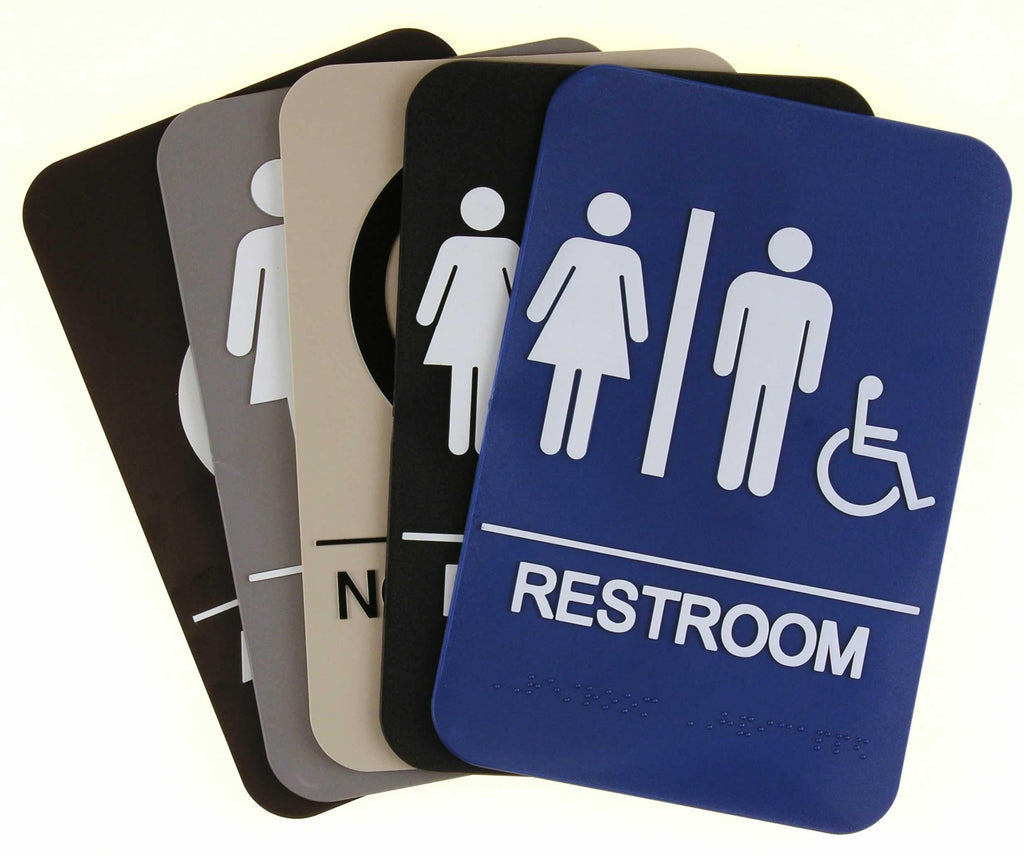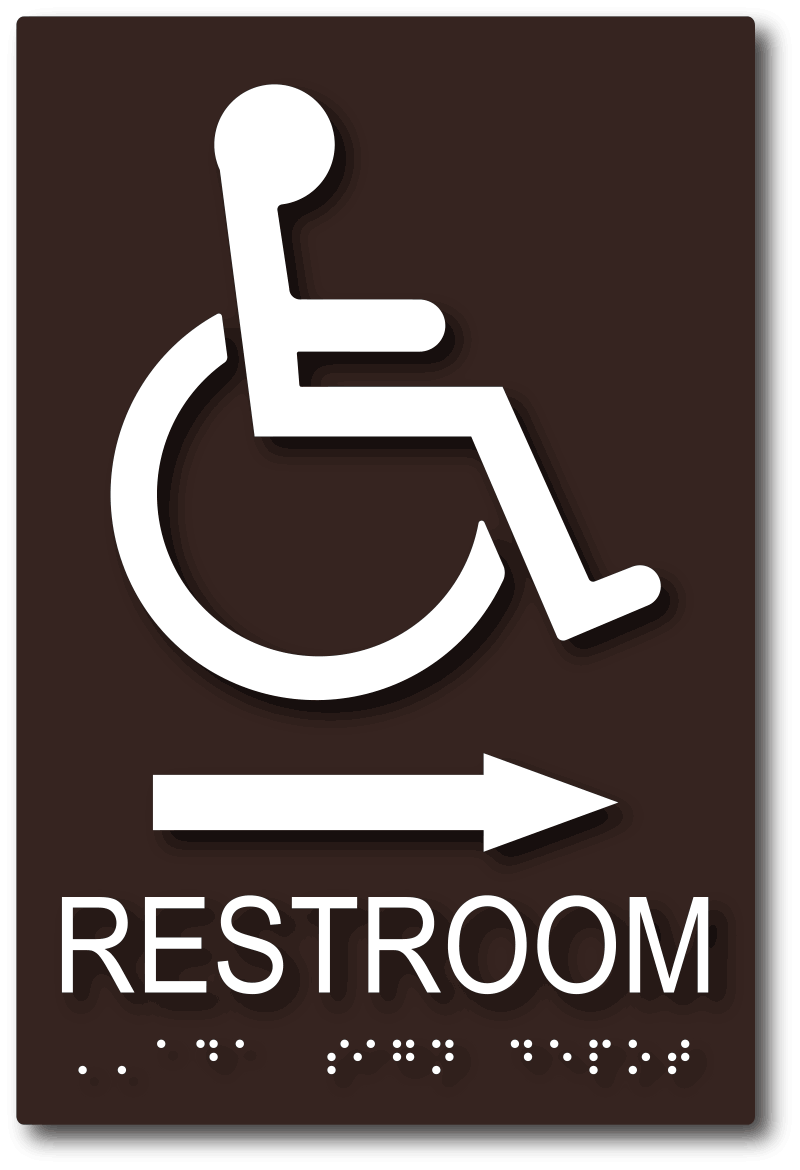Exploring the Key Functions of ADA Indicators for Improved Ease Of Access
In the world of accessibility, ADA indications function as silent yet powerful allies, making sure that rooms are comprehensive and navigable for people with specials needs. By integrating Braille and tactile components, these signs break obstacles for the aesthetically impaired, while high-contrast color design and clear font styles deal with varied visual requirements. Additionally, their strategic positioning is not approximate but instead a calculated initiative to help with seamless navigation. Past these features lies a deeper story about the advancement of inclusivity and the continuous dedication to producing fair rooms. What more could these signs signify in our search of global availability?
Relevance of ADA Conformity
Making sure conformity with the Americans with Disabilities Act (ADA) is important for promoting inclusivity and equal access in public spaces and work environments. The ADA, enacted in 1990, mandates that all public centers, companies, and transport solutions fit people with impairments, ensuring they take pleasure in the very same rights and possibilities as others. Conformity with ADA criteria not only satisfies legal responsibilities but also boosts a company's credibility by showing its dedication to diversity and inclusivity.
Among the key facets of ADA compliance is the implementation of easily accessible signs. ADA indicators are designed to guarantee that individuals with disabilities can quickly navigate via areas and structures. These signs need to stick to details standards relating to dimension, font, shade comparison, and positioning to ensure visibility and readability for all. Properly carried out ADA signs helps eliminate barriers that people with disabilities typically experience, thus advertising their independence and confidence (ADA Signs).
Additionally, sticking to ADA policies can reduce the risk of lawful effects and possible fines. Organizations that fall short to abide by ADA standards might face penalties or claims, which can be both financially troublesome and destructive to their public picture. Thus, ADA conformity is important to cultivating a fair atmosphere for everyone.
Braille and Tactile Elements
The incorporation of Braille and tactile components right into ADA signs symbolizes the principles of ease of access and inclusivity. It is typically placed below the matching message on signs to guarantee that people can access the details without aesthetic assistance.
Responsive elements extend past Braille and include raised signs and personalities. These parts are made to be discernible by touch, permitting people to recognize area numbers, toilets, departures, and other important locations. The ADA establishes specific guidelines regarding the size, spacing, and positioning of these tactile elements to maximize readability and make certain uniformity across different environments.

High-Contrast Color Pattern
High-contrast color pattern play a crucial function in improving the presence and readability of ADA signs for individuals with visual problems. These plans are vital as they maximize the distinction in light reflectance in between text and background, guaranteeing that indications are quickly discernible, also from a distance. The Americans with Disabilities Act (ADA) mandates making use of specific shade contrasts to fit those with limited vision, making it a critical aspect of compliance.
The efficacy of high-contrast colors hinges on their capacity to stand out in numerous lighting problems, including poorly lit settings and locations with glare. Normally, dark message on a light background or light text on a dark history is employed to accomplish optimum contrast. As an example, black text on a white or yellow background gives a raw aesthetic distinction that aids in quick recognition and understanding.

Legible Fonts and Text Dimension
When taking into consideration the style of ADA signs, the option of readable typefaces and proper text size can not be overemphasized. These elements are essential for making sure that signs are available to people with aesthetic disabilities. The Americans with Disabilities Act (ADA) mandates that font styles must be sans-serif and not italic, oblique, script, very decorative, or of unusual type. These needs aid guarantee that the message is easily legible from a distance and that the personalities are appreciable Extra resources to varied target markets.
The size of the message additionally plays a pivotal role in access. According to ADA standards, the minimum text elevation should be 5/8 inch, and it should raise proportionally with watching distance. This is specifically vital in public rooms where signage demands to be read rapidly and precisely. Uniformity in text dimension contributes to a cohesive aesthetic experience, assisting people in navigating atmospheres successfully.
Additionally, spacing in between lines and letters is essential to readability. Adequate spacing prevents personalities from appearing crowded, enhancing readability. By sticking to these requirements, developers can considerably improve accessibility, guaranteeing that signs serves its desired objective for all individuals, no matter of their aesthetic abilities.
Effective Placement Methods
Strategic positioning of ADA signs is vital for making the most of ease of access and ensuring compliance with legal criteria. ADA standards state that indications need to be mounted at a height in between 48 to 60 inches from the ground to ensure they are within the line of sight for both standing and seated individuals.
In addition, indications have to be positioned adjacent to the latch side of doors to permit very easy recognition before entry. This positioning helps individuals situate spaces and areas without blockage. In situations where there is no door, indicators must be situated on the local surrounding wall. Uniformity in indication placement throughout a center improves predictability, reducing confusion and enhancing overall our website individual experience.

Final Thought
ADA indicators play an essential function in promoting ease of access by integrating attributes that attend to the needs of people with disabilities. Integrating Braille and responsive elements makes certain critical details is available to the visually damaged, while high-contrast color pattern and clear sans-serif fonts improve visibility throughout various lighting conditions. Efficient placement approaches, such as ideal installing elevations and calculated areas, better assist in navigation. These her response aspects jointly promote a comprehensive environment, underscoring the relevance of ADA compliance in making sure equivalent gain access to for all.
In the world of accessibility, ADA indicators serve as silent yet effective allies, making sure that rooms are inclusive and navigable for people with specials needs. The ADA, established in 1990, mandates that all public facilities, employers, and transportation solutions accommodate people with impairments, ensuring they delight in the exact same legal rights and chances as others. ADA Signs. ADA signs are developed to ensure that people with disabilities can conveniently navigate via rooms and buildings. ADA standards state that indicators should be installed at an elevation between 48 to 60 inches from the ground to guarantee they are within the line of view for both standing and seated individuals.ADA signs play an essential function in promoting access by incorporating features that address the requirements of people with specials needs
Comments on “ADA Signs: Important Tools for Inclusive Environments”